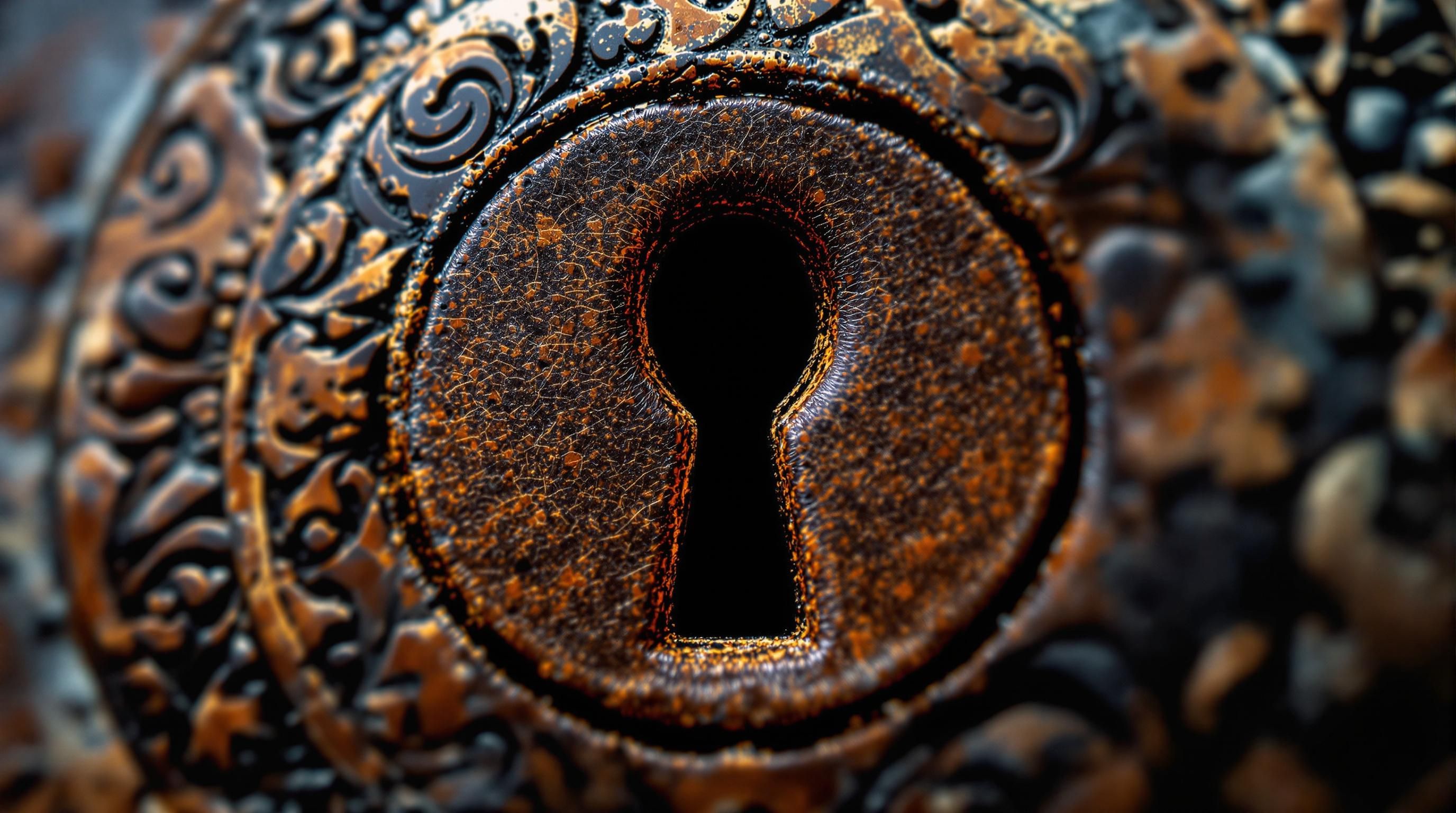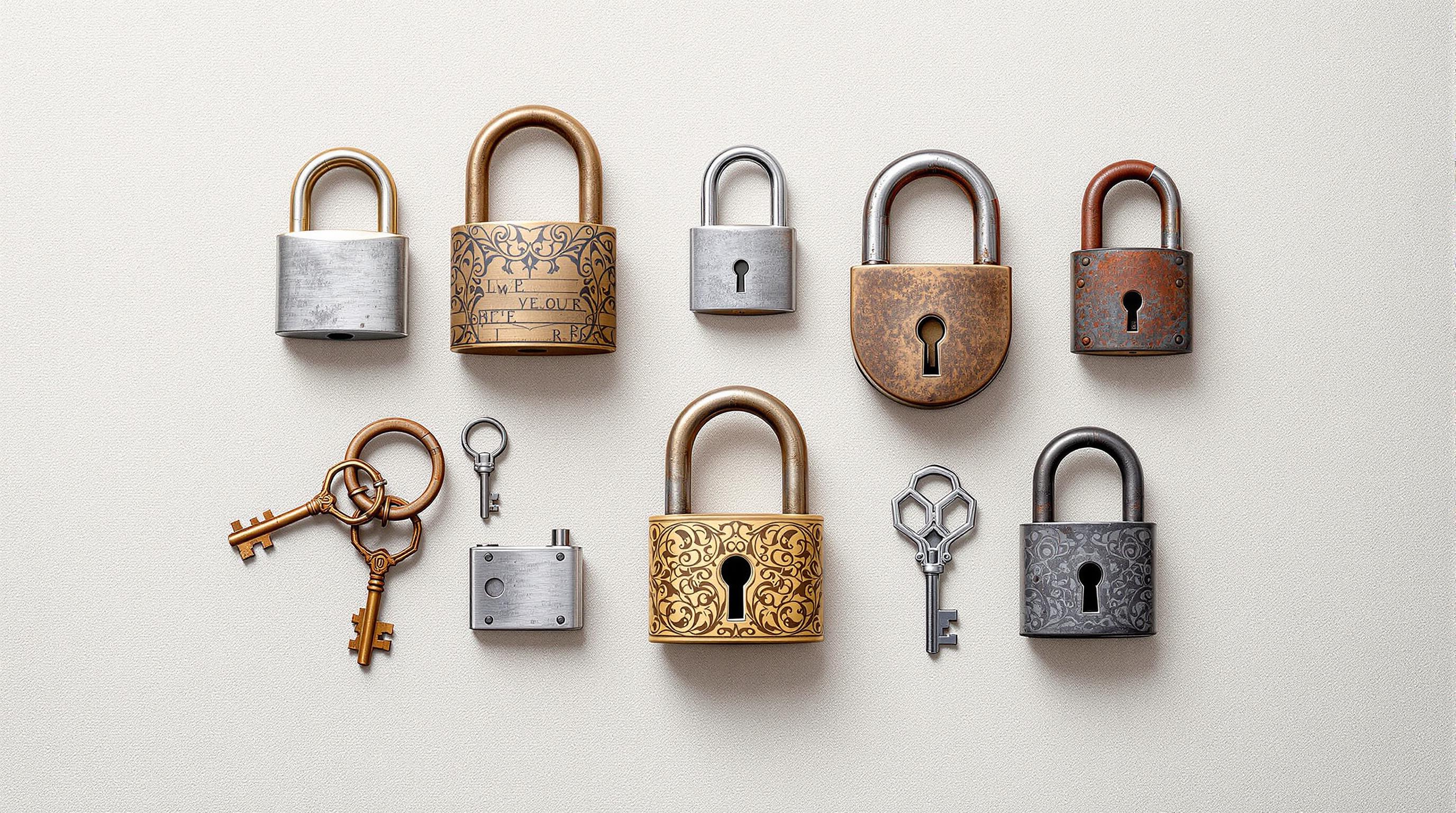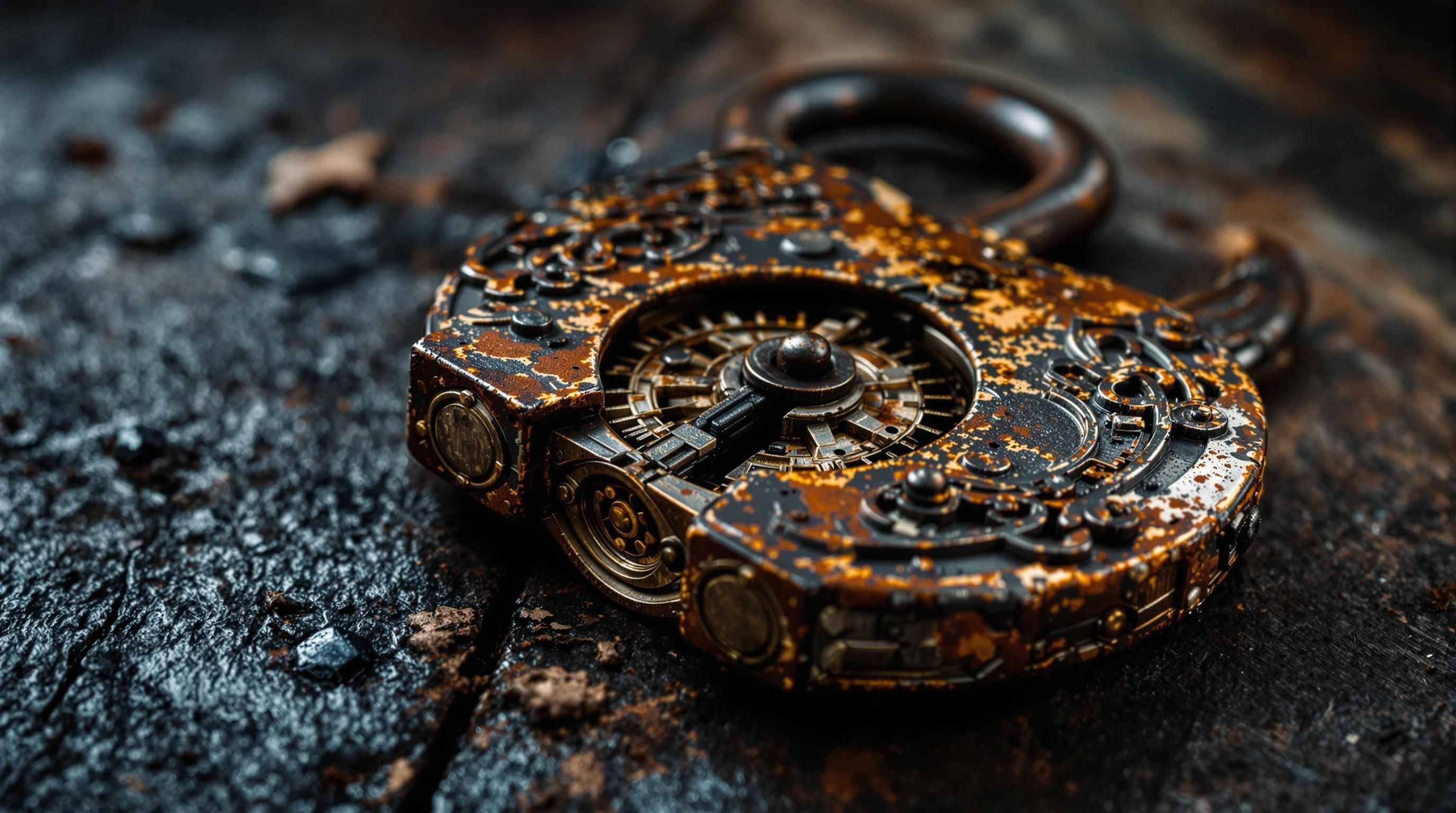The world of antique padlocks offers a fascinating glimpse into the evolution of security devices throughout history. These mechanical marvels, often overlooked as mere utilitarian objects, represent centuries of craftsmanship, innovation, and design excellence. Whether you’re a serious collector, someone who has inherited an old lock, or simply curious about the value of a vintage padlock you’ve discovered, this comprehensive guide will help you identify, authenticate, and value these intriguing artifacts.
The Evolution of Padlocks Through History
Historical Evolution of Padlocks
- 3000 BCE
Ancient Origins
The earliest known padlocks originated in Egypt and Mesopotamia, made from wood with simple pin mechanisms. - 500-900 CE
Viking Era Locks
Viking and Roman padlocks featured bronze or iron construction with primitive spring mechanisms. - 1700s
Scandinavian Iron Padlocks
Ornate iron padlocks with intricate keyways became popular in Northern Europe. - 1800s
Industrial Revolution
Mass production began, with cast iron, brass, and bronze padlocks becoming widely available. - Late 1800s
American Innovation
American lock companies like Yale introduced new lever tumbler and pin tumbler mechanisms. - Early 1900s
Modern Design
Standardized designs emerged with improvements in security features and mass production.
When examining an antique padlock, consider its overall design, materials, and mechanism as these elements often correspond to specific historical periods. For example, hand-forged padlocks with ornate details typically predate the mass-production era of the mid-19th century.
Common Types of Antique Padlocks
Scandinavian Iron Padlocks
These distinctive locks, often called “Viking” or “Germanic” padlocks, feature iron construction with ornate, sometimes heart-shaped bodies. They typically have complex keyways and were produced from the 17th to early 19th centuries.
Smokehouse Padlocks
Used primarily to secure smokehouses in America, these distinctive cast iron padlocks feature a rectangular body with a rounded top and were popular from the early 1800s through the early 1900s.
Trick or Puzzle Padlocks
These novelty locks require specific movements or actions beyond simply inserting a key. They were particularly popular during the Victorian era and make fascinating collector’s items.
Warded Padlocks
One of the most common antique padlock types, warded locks have internal obstructions (wards) that prevent the wrong key from turning. Look for characteristic keyways with distinctive shapes.
Lever Tumbler Padlocks
More secure than warded locks, lever locks contain a series of levers that must be lifted to the correct height by the key to open the lock. These became popular in the 19th century.
Combination Padlocks
These keyless locks operate using a sequence of numbers, letters, or symbols. Antique combination padlocks date back to the mid-19th century and feature rotating dials or movable rings.
Key Facts About Antique Padlocks
More than 25,000 different padlock patents were issued in the USA alone between 1790-1930
The oldest known padlocks date back nearly 4,000 years to ancient Mesopotamia
Collector-grade antique padlocks can command prices exceeding $1,000 for rare examples
Identifying Antique Padlock Manufacturers
Major American Manufacturers
Yale & Towne Manufacturing Company Founded in 1868 by Linus Yale Jr. and Henry R. Towne, Yale produced many innovative lock designs. Look for the Yale name stamped on the lock body or shackle.
Miller Lock Company Established in Philadelphia in 1870, Miller locks often feature “Miller” or “Miller Lock Co.” markings and were known for their high quality.
Slaymaker Lock Company Founded in 1889 in Lancaster, PA, Slaymaker produced distinctive padlocks often marked with “Slaymaker” or “SLC” stampings.
Fraim Lock Company Operating from 1905 to 1949 in Lancaster, PA, Fraim locks typically have “Fraim” or “J.E. Fraim” markings.
European Manufacturers
H. Chubb & Son This renowned British company, established in 1818, produced high-security locks with “Chubb” markings.
Joseph Bramah Another prestigious British maker whose locks are highly collectible, often bearing the name “Bramah” on the lock body.
German and Scandinavian Makers Look for maker’s marks such as “ABUS” (founded 1924), “Abloy” (Finland), and various local smithing marks on older examples.
Padlock Authentication Checklist
Use this checklist to help authenticate a potentially valuable antique padlock
- Patina and wear consistent with claimed age
- Maker's marks or patent dates match known manufacturers
- Construction methods appropriate for the era (hand-forged vs. machine-made)
- Material composition authentic to the period
- Key design matches the lock mechanism technology
- No modern materials or manufacturing techniques present
For definitive identification of rare or valuable specimens, consider consulting specialized reference books or connecting with knowledgeable collectors through organizations like the Antique Doorknob Collectors of America, which includes many lock enthusiasts.

Examining Lock Mechanisms
Warded Mechanisms
The oldest and simplest lock type. Look for:
- Simple internal barriers (wards) that prevent incorrect keys from turning
- Keys with notches that match the internal ward configuration
- Generally lower security than later mechanisms
Lever Tumbler Mechanisms
More sophisticated than warded locks, featuring:
- Multiple internal levers that must be raised to precise heights
- Keys with distinct bit patterns to lift each lever correctly
- Often found in quality locks from the 19th century onward
Pin Tumbler Mechanisms
A more modern design becoming common in the late 19th century:
- Series of spring-loaded pins that must be aligned at the shear line
- Keys with precisely cut notches to position pins correctly
- Higher security than earlier designs
Combination Mechanisms
Found in keyless locks dating from the mid-19th century:
- Rotating dials or discs that must align internal components
- No external key required
- Various complexity levels from simple to highly sophisticated
To examine the mechanism without damaging the lock, look through the keyhole with a small flashlight or consider X-ray imaging for particularly valuable specimens.
Antique Padlock Value Ranges
Current market valuations based on condition and rarity (2023)
</tbody>
</table>

Materials and Construction Analysis
Common Materials in Antique Padlocks
Iron and Steel
- Earliest padlocks were hand-forged iron
- Cast iron became common in the 19th century
- Look for rust patterns and patina consistent with age
- Hand-forged items show hammer marks and irregularities
Brass and Bronze
- Popular for higher-quality locks from the 18th century onward
- Develops distinctive patina over time
- Often used for internal components even in iron-bodied locks
- Check for verdigris (green corrosion) in crevices
Specialty Materials
- Silver, gold, or jewel embellishments on presentation or luxury locks
- Leather or fabric coverings on some decorative examples
- Wood components in very early or specialized designs
Construction Techniques
Hand-Forged Construction (pre-1850s)
- Individual hammer marks visible
- Irregular seams and joins
- Asymmetrical elements common
Cast Construction (mid-19th century onward)
- Mold seams often visible
- More consistent dimensions
- May have casting numbers
Machine-Made Components (late 19th century onward)
- Precisely machined parts
- Standardized screw threads
- Uniform tolerances
Examining these elements closely can help distinguish between genuinely antique padlocks and more recent reproductions or fakes, which often lack the authentic patina and manufacturing signatures of period pieces.
Assessing Condition and Value
Condition Factors Affecting Value
Functionality
- Working locks with original keys command premium prices
- Seized mechanisms may be restorable but affect value
- Internal condition often matters more than external appearance
Completeness
- Original keys dramatically increase value (often doubling or tripling it)
- All original components present
- Period-appropriate chains or fittings enhance appeal
Surface Condition
- Original patina preferred over cleaning or polishing
- Significant rust or corrosion reduces value
- Period repairs may add character but modern repairs decrease value
Important Value Considerations
Rarity Uncommon makers, limited production models, and locks with unusual features command higher prices.
Historical Significance Locks with documented provenance or historical connections (such as those from famous buildings, ships, or personalities) can be especially valuable.
Collector Interest Certain categories attract more intense collector interest, such as:
- Figural padlocks shaped like animals or objects
- Early American makers like Slaymaker or Miller
- Ornate Scandinavian iron locks
- Prison or bank locks with complex mechanisms
The market for antique padlocks continues to grow as more collectors appreciate their historical and artistic significance, with particularly rare examples setting new price records at specialized auctions.
Notable Antique Padlock Auction Results
Recent sales of exceptional antique padlocks
| Category | Price | Notes |
|---|---|---|
| Common 19th-century warded padlocks | $25-$150 | Widely available; value depends on condition and decorative elements |
| Scandinavian iron padlocks (17th-18th century) | $200-$1,000+ | Higher values for ornate examples with original keys |
| American smokehouse padlocks | $75-$300 | Higher values for rare maker marks and complete original hardware |
| Trick or puzzle padlocks | $100-$1,500+ | Value increases with mechanism complexity and condition |
| Early Yale padlocks with original keys | $75-$500 | Premium for early examples in working condition |
| Rare or exhibition-quality examples | $500-$5,000+ | Museum-quality pieces with historical significance |
</tbody>
</table>
Caring for Antique Padlocks
Cleaning and Preservation
The first rule of antique lock maintenance is to preserve rather than restore. Follow these guidelines:
Light Cleaning Only
- Remove loose dirt with soft brushes
- Avoid harsh chemicals or abrasives
- Never sandblast or power-clean antique locks
Stabilization vs. Restoration
- Focus on preventing further deterioration
- Apply light oil to moving parts if the lock is functional
- Consider Renaissance Wax for exterior protection
Storage Considerations
- Maintain stable humidity and temperature
- Store in acid-free materials
- Keep keys with their corresponding locks
- Document any known history or provenance
Working with Specialists
For particularly valuable or delicate specimens, consider:
Professional Conservation Specialized conservators can stabilize deteriorating metals or mechanisms without compromising historical integrity.
Lock Specialists For locks you wish to make functional, specialists can carefully repair mechanisms while preserving historical features.
Documentation Services Professional photography and condition reports can help establish provenance and support insurance valuations.
Remember that inappropriate cleaning or amateur restoration attempts can significantly reduce the value of antique padlocks. The temptation to make an old lock shiny and new should be resisted, as collectors generally prize original condition with authentic patina.
Common Questions About Antique Padlock Identification
How can I tell how old my padlock is?
Age determination requires examining multiple factors:
- Mechanism type (warded mechanisms are typically older than pin tumbler designs)
- Manufacturing techniques (hand-forged vs. cast vs. machine-made)
- Maker’s marks or patent dates (if present)
- Material composition and patina
- Style and design elements characteristic of specific periods
For precise dating, compare your lock to authenticated examples in reference books or museum collections. Patent dates, when present, provide a reliable "not older than" date but remember that some designs were manufactured for decades after the patent date.
What makes an antique padlock valuable?
Several factors influence the value of antique padlocks:
- Rarity: Uncommon makers, limited production models, or unusual designs
- Condition: Working mechanisms and original finish
- Completeness: Original keys dramatically increase value
- Historical significance: Documented provenance or connection to important events/places
- Decorative appeal: Ornate or artistic examples command premium prices
- Collector demand: Certain types or makers have stronger collector followings
The most valuable antique padlocks combine several of these factors, with museum-quality examples from the 18th century or earlier potentially commanding thousands of dollars.
How can I identify the maker of my antique padlock?
Look for these identifying features:
- Maker’s marks stamped on the body, shackle, or key
- Patent dates or numbers (can be researched in patent databases)
- Distinctive design elements associated with specific manufacturers
- Company logos or insignia
If no obvious markings exist, compare the lock to examples in reference books or online databases like those maintained by the Antique Locks Forum. For American padlocks, David Heuermann’s website Antique-Padlocks.com provides extensive manufacturer information.
Should I clean or restore my antique padlock?
In most cases, minimal intervention is best:
- Light cleaning to remove dirt is acceptable using soft brushes
- Avoid harsh chemicals, dips, or abrasive cleaning methods
- Do not polish away patina, which collectors value
- For functional locks, minimal lubrication with appropriate oils may be acceptable
Professional conservation is recommended for valuable specimens. Remember that improper cleaning or restoration can significantly decrease a padlock’s value. The general rule in antique collecting applies: "When in doubt, do nothing."
Where can I find the key for my antique padlock?
Finding original keys for antique padlocks can be challenging:
- Search antique lock collector forums and websites where enthusiasts sometimes help match keys to locks
- Attend lock collector conventions or antique shows specializing in hardware
- Contact specialized locksmiths who work with antique locks
- For some common models, reproduction keys may be available
Be cautious about having modern keys made, as improper attempts can damage antique mechanisms. For valuable locks, working with specialists who understand historical lock mechanisms is essential.
Are there any mobile apps for identifying antique padlocks?
While there isn't a comprehensive app specifically for antique padlock identification, these resources can help:
- General antique identification apps like "Worthpoint" can provide auction results for similar locks
- Image recognition apps can sometimes find visually similar examples
- Online forums where experts can examine photos of your lock
The complex nature of lock identification, with thousands of historical manufacturers and designs, makes this an area where human expertise still exceeds automated solutions. Posting clear photos on specialized forums like the Antique Locks Forum often yields better results than automated apps.
What is the most collectible type of antique padlock?
Several categories are particularly sought-after by serious collectors:
- Figural padlocks shaped like animals, people, or objects
- Early hand-forged Scandinavian iron padlocks with intricate keyways
- Trick or puzzle padlocks requiring specific sequences to open
- Early American padlocks from the 18th and early 19th centuries
- Exhibition or presentation locks made for World’s Fairs or special occasions
- Prison or bank padlocks with exceptionally complex security features
Within each category, specimens with original keys, documentation of provenance, and excellent condition command the highest prices. The market continues to grow as more collectors appreciate these functional pieces of history.
How can I tell if my antique padlock is a reproduction?
Watch for these signs that may indicate a reproduction:
- Inconsistent aging or artificially applied patina
- Modern manufacturing techniques like machine-perfect castings
- Materials not consistent with the purported age
- Weight differences (reproductions are often lighter)
- Absence of expected wear patterns on frequently used parts
- Incorrect internal mechanisms for the style and period
When in doubt, consult with experienced collectors or specialists who have handled many authentic examples. The Antique Locks Forum is a good place to post clear photos for expert assessment.
External Resources for Antique Padlock Collectors
Antique Padlocks By David Heuermann
Comprehensive resource with hundreds of illustrated examples of antique padlocks organized by type, with detailed information on American manufacturers.
The Antique Locks Forum
Active community forum for lock collectors with experts who can help identify unusual specimens and share knowledge about historical locks.
Antique and Vintage Locks Collection Guide
Collector's Weekly provides historical context and collecting information for various types of antique locks and keys.
TreasureNet Lock Identification Forum
Discussion forum where collectors share information about discovered locks and help with identification challenges.
Historic Houseparts Antique Padlock Collection
Commercial site with a curated collection of antique padlocks that provides visual references for identification.
Reddit Locksmith Community
Active community where professionals and enthusiasts share knowledge about historical locks and mechanisms.
Conclusion: The Enduring Appeal of Antique Padlocks
Whether you’re beginning your journey as a collector or seeking to identify a single specimen found in an attic or flea market, understanding the historical context, manufacturing techniques, and identifying characteristics of antique padlocks will enhance your appreciation of these remarkable artifacts.
The field of antique padlock collecting continues to grow, with new research uncovering previously unknown makers and designs. Online communities and specialist publications provide opportunities to connect with fellow enthusiasts and expand your knowledge.
As with any antique collecting specialty, patience and ongoing education are key to developing expertise in identification. Each padlock tells a story of its time, maker, and purpose—learning to “read” these stories adds immeasurably to the pleasure of collecting these miniature masterpieces of industrial art.
Remember that the most valuable resource in antique padlock identification is the collective knowledge of the collector community. By sharing information and experiences, collectors help preserve the history and heritage of these remarkable artifacts for future generations to study and enjoy.
Get a Professional Appraisal
Unsure about your item’s value? Our certified experts provide fast, written appraisals you can trust.
- Expert report with photos and comps
- Fast turnaround
- Fixed, upfront pricing
No obligation. Secure upload.
| Item | Price | Date | Auction House |
|---|---|---|---|
| 18th-century silver presentation padlock | $4,250 | December 2022 | Christie's |
| Early Yale prototype with documentation | $3,800 | March 2023 | Specialized Lock Auction |
| 17th-century German figural padlock | $2,750 | November 2022 | Sotheby's |
| Collection of 23 antique smokehouse padlocks | $5,200 | April 2023 | Heritage Auctions |




